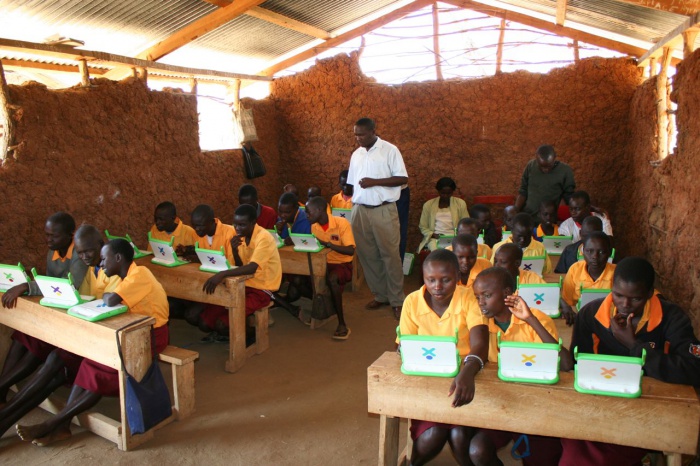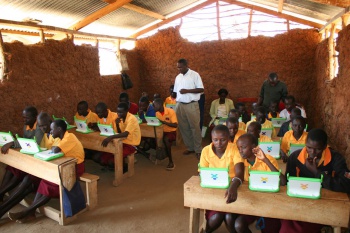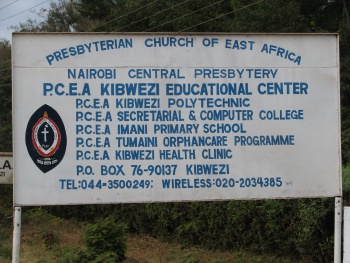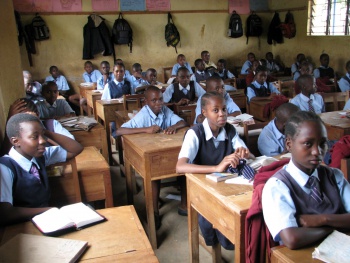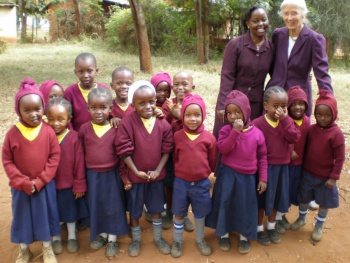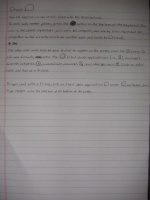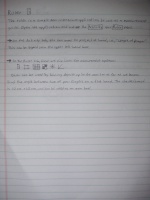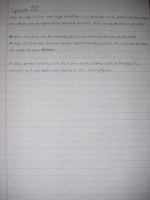OLPC Kenya: Difference between revisions
(OLPC_world_map) |
No edit summary |
||
| (51 intermediate revisions by 13 users not shown) | |||
| Line 1: | Line 1: | ||
{| align="right" |
|||
{{stub}} |
|||
| __TOC__ |
|||
{{Country color status | red = red <!-- | local_text = replaceWithLocalLanguageText -->}} |
|||
|} |
|||
[[Image:Asilong-Classroom.jpg|700px]] |
|||
We need at least English and [[Swahili]] (aka Kiswahili). Additional tribal languages would be nice so that children can use their mother tongue. |
|||
== Welcome == |
|||
== OLPC Kenya Acceptance and Implementation == |
|||
{{Country_box| |
|||
Country=Kenya| |
|||
Flag=Pls complete| |
|||
Code=Pls complete| |
|||
Wikipedia= Kenya | |
|||
Support= Pls complete | |
|||
Deployment= Pls complete| |
|||
Keyboard=Pls complete| |
|||
Spoken=Pls complete| |
|||
Written=Pls complete| |
|||
Written2=English (en)| |
|||
Spoken2=English (en)}} |
|||
... and thanks for visiting the pages for OLPC related matters in Kenya. OLPC is the One Laptop Per Child '''Universal Primary Education project''' and largest educational project undertaken by Humanity ever. Supported by United Nations, OLPC is '''an "[[Open Commmunity" project]]''', similar to the [[Wikipedia]] and [[Open Source]] Community projects, like [[Linux]], [[OpenOffice]], etc. and it is working along [[Agenda 21]] and [[Millennium Development Goal]] nr.2: Bringing Universal Primary Education. To edit text on this page or add pages, log in and and "edit page / save page" button will appear. |
|||
I agree but for initial roll out or deployment, laptops with English only would be fine. There is a strong desire in Kenyan children from a very young age to learn and improve their English skills. Kiswahili and English are both taught in public primary schools, with Kiswahili and a tribal language often being used at home, so it is not like English is being imposed through the OLPC project. |
|||
* 2' video - [http://www.youtube.com/watch?v=c-M77C2ejTw&NR=1 OLPC Intro part 1] |
|||
Larger issues in Kenya are corruption and a fairly substantial commitment to and investment in "hand-me-down" obsolete hardware, technologies and proprietary software by the government and existing NGO's. |
|||
* 2' video - [http://www.youtube.com/watch?v=qMeX2D4AOjM&feature=related OLPC Intro part 2] |
|||
* 7' video: [http://on.aol.com/video/the-success-of-the-one-laptop-per-child-organization-297293043 Impact on teachers, parents, kids, society.] |
|||
The aim of this educational project, is on one hand to bring Universal Primary Education by 2015 as - anno year 2000 initiated - '''United Nations [[Millennium Development Goal]] nr.2'''. On the other hand, OLPC's mission is to manage the open hard and software project, to bring forward the best possible laptop combination for education: the [[XO-XServer combination]]. For this and above approach, - and also a lot of lobbying by the right persons on the right places and time - '''the United Nations is a Partner in this Open Community project'''! It is the largest educational project undertaken by Humanity ever, and deemed by many as one of the most inspiring projects out there. 2008, saw the first countries with a 100% roll out to all of their kids aged 5 till 15: Peru, Uruguay. Several [[Island States]] have a 100% deployment too; [[Rwanda]] and [[Australia]] are following at fast pace too. Every XO can load over 100 ebooks on its memory and has a choice of over 86.000 [[eBooks]] available, as well as many (educational) games, all education disciplines covered, etc. etc.. things are moving fast indeed. |
|||
Educational or other institutions need to be educated on the value of adopting and supporting new and cutting edge technologies and projects like OLPC. |
|||
[[File:GaladimaBeforeOLPCdeployment.jpg|500px]] [[File:Galadima0.jpg|425px]] |
|||
We also need an internet service provider to partner with OLPC for reliable connectivity. Some of the ISP's already provide free service for some schools. --[[User:Rafikiyako|Rafikiyako]] 01:21, 16 November 2007 (EST) |
|||
Many inhabitants look for their fortune elsewhere. Therefore there is a very very large diaspora. We hope that this diaspora will work their way to these pages, set-up, link-up their projects with OLPC, coordinate projects and that they can inspire many in their host countries to come along. It is so difficult in these host countries to develop additional value and hence make money. In many regions in the home country however it is so easy as everything is to be developed. |
|||
== See Also == |
|||
Also the societies from the host countries will benefit from the Kenya diaspora who has one leg in the host country and another still in their countries of origin. Maybe it will start by developing leadership for OLPC, but soon it will be accompanied by exporting technologies, know-how and experience from the host countries along Agenda 21, the MDG's and together you will be able to accelerate bringing the level of quality of life in Kenya to a level that will inspire others, existing generations and generations to come. |
|||
Please feel free to create links, (sub-)categories or list or start collaborating, teaming up and expanding our and your projects, existing and new ones in one of these (sub-)categories. |
|||
==Suggested Links and [[categories]]== |
|||
#[[Kenya]] |
|||
#[[OLPC Kenya]] |
|||
#[[Kenya Looking Backward to what has been done]] |
|||
#[[Brainstorming how to get the Kenya Gvt interested in OLPC]] |
|||
#[[What every government should ask itself when considering an ebook deployment]] |
|||
#[[Stages and Budget]] |
|||
#[[Kenya Stages and Budget]] |
|||
#[[Kenya Budget for Phase II, Data Retrieval Phase]] |
|||
#[[FAQ Kenya]] |
|||
#[[Who's Who OLPC-Kenya]] |
|||
## [[OBJECTIF BROUSSE Ecoles OLPC]] |
|||
#[[Kenya Meetings]] |
|||
#[[OLPC Africa]] |
|||
#[[OLPC Afrique]] |
|||
#[[Deployment Guide]] |
|||
==Who's Who OLPC-Kenya== |
|||
# '''OLPC Kenya''' includes a number of small deployment communities: Asilong in West Pokot, three OLPCorps projects (Kibwezi, Mombasa-North, and Nairobi), and an east-coast project near Lamu. In all, there are some 500 children in 5 schools in Kenya learning with XOs. |
|||
# sent an email to link up to info at givedirectly.org --[[User:SvenAERTS|SvenAERTS]] 15:26, 2 January 2014 (UTC) |
|||
== Map, Discussion List & Blogs == |
|||
All OLPC-related Kenya projects are strongly encouraged to post onto [http://olpcMAP.net?go=kenya olpcMAP.net], which is OLPC's global community map of all projects large and small -- helping volunteers, local champions and schools to connect directly! |
|||
Please join the Kenya OLPC mailing list if you want to join the discussion, or merely keep in touch: http://groups.google.com/group/kenya-olpc |
|||
Subscribing is as easy as sending a blank email here: kenya-olpc+subscribe@googlegroups.com |
|||
Finally, in 2011, here are some great example community blogs from olpcMAP: |
|||
http://www.ntugischool.com<br> |
|||
http://ntugigroup.org<br> |
|||
http://olpcinbura.blogspot.com<br> |
|||
http://olpckibwezi.blogspot.com<br> |
|||
http://educateruralchild.wordpress.com |
|||
== Next in line for deployment == |
|||
Suggestion: The towns of Sauri and Dertu, as both are [[Millennium Villages]].--[[User:SvenAERTS|SvenAERTS]] 02:07, 29 May 2012 (UTC) |
|||
== Asilong Primary School, West Pokot == |
|||
Asilong is a small village about 10 km beyond Kacheliba in the arid region of West Pokot. 100 XO laptops were deployed there in July of 2009 and are charged using solar power as there is no electricity in the village yet. For the first year of usage, the students had no school server, so they spent their time learning the XO hardware and the pre-loaded activities. In November 2010 the XOs were updated to the latest operating system and an XS server was installed. The students are now using a public library on the server to access current information and educational material that is loaded by the school's headmaster, Joachim Krop, and IT manager, Julius Sawe. Through the library they also have access to audio files in their native language of Pokoot, as well as educational animations. |
|||
[[Image:Asilong-Classroom.jpg|thumb|350px|Students enjoying logging onto their XS school server for the first time]] |
|||
In March, additional local content in line with the Kenyan standard educational course material will be added using Moodle. Online quizzes will be available to aid the students in preparing for national exams. Asilong has been highlighted in several articles in national newspapers as they are moving ahead in e-learning despite their remote location. For more information contact: asilong.olpc@gmail.com |
|||
<gallery> |
|||
Image:Asilong-Animation.jpg|Students interact with "digestion" animation downloaded from the library |
|||
Image:Asilong-Dorm.jpg|Girls dormitory with four solar panels used to charge the XOs |
|||
Image:Asilong-listen.jpg|Asilong student listens carefully to instructions on using his XO laptop |
|||
</gallery> |
|||
== Ntugi Day Secondary School, Meru == |
|||
Ntugi Day Secondary School is located 25 km from Meru. It serves approximately 250 students and has been using OLPC XO's since March, 2009. |
|||
For more information contact: mark at ntugigroup.org |
|||
== OLPCorps Kibwezi 2008 == |
|||
''full article: see [[OLPCorps Kibwezi]]'' |
|||
Kibwezi is a small rural town located in the arid region of Kenya, about half-way between the capital of Nairobi and the coastal city of Mombassa. Many of the students come from the surrounding farms. Their families survive on subsistence agriculture and many do not have electricity or running water in their homes. The access to laptop computers stirs emotions of pure joy inside of the children. Last year some teachers took the computers home and took home videos of their families and church choirs and with the record program. |
|||
[[Image:P1010051.JPG|thumb|350px|A child at the Imani Primary School in Kibwezi, Kenya learns with an XO.]] |
|||
Our team is composed of 22 Americans from Burke Presbyterian Church partnered with the Imani Primary School at the Kibwezi Educational Centre, in Kibwezi Kenya. Our group has already made personal commitments to pay for ourselves to return to Kenya in July 2009. We are scheduled to arrive on July 3rd and leave July 27th. During that time, we break into small teams and learn from our Kenyan teachers how they faired over the past year with the OLPCs. We are taking fresh faces this year; five members of the team are enrolled in university level classes at the following schools: VA Tech, James Madison University, Radford University, Bucknell University, and Northern Virginia Community College.<br /> |
|||
<br /> |
|||
This will be our second deployment of OLPC computers to the primary school. Last year we purchased six OLPCs through the Give-One-Get-One (G1G1) program. This year we have already purchased four OLPC computers, two new OLPCs through G1G1 and two used OLPCs through Ebay; in addition we have adapted "Sugar on a Stick" to train team members who do not have the original hardware. Our focus this year is developing a curriculum which fits into Kenya's focus on standardized testing. We have two former teachers training with the Laptops via a tutoring program located in Burke Presbyterian Church. This practical experience paired with guidance via email communication with the director of the Imani Primary school will prepare us for our second deployment. |
|||
<br /> |
|||
=== About the Partner School === |
|||
[[Image:Kibwezi-0807 434.jpg|350px]] [[Image:Kibwezi-0807 556.jpg|350px]] |
|||
The campus of the Kibwezi Educational Centre contains a primary school and preschool exist for grades one though eight. There are approximately 400 hundred students in the primary school. These students range in age from 6 to 12 years old. <br /> |
|||
<br /> |
|||
[[Image:P7180008.JPG|350px]]<br /> |
|||
<br /> |
|||
Diane Reimers with kindergarten age students. |
|||
<br /> |
|||
[[Image:P1010049.JPG|350px|Three Kenyan teachers from the Imani primary school in Kibwezi, Kenya teach OLPC to their students.]] |
|||
<br /> |
|||
Three Kenyan teachers from the Imani primary school in Kibwezi, Kenya teach OLPC to their students |
|||
'''Several strengths of the OLPC deployment to the Kibwezi educational Centre include:''' |
|||
1) A '''twenty-one year history''' between Burke Presbyterian Church and the Local Presbyterian Church of East Africa, to include the Educational Centre and the Inmani Primary school, which we help fund. |
|||
2) '''As for the budget, we are self sufficient''' for the trip to Kenya. OLPC is "bonusing" off of costs already covered by Burke Presbyterian Church, to included thousands in travel expenses, OLPC shipping, and the salaries of the local Kenyan teachers. When awarded 100 OLPC laptops by OLPC Africa Corps, '''church members carry 5 OLPCs each, thus providing a guarantee that the computers arrive safely at their intended destination.''' |
|||
<br /> |
|||
[[Image:PICT0024.JPG|250px]]<br /> |
|||
Cell tower in Kibwezi, used for access to internet service.<br /> |
|||
<br /> |
|||
3) A '''demonstrated commitment to learning''' at the local level in the United States. Both by attending meetings of the '''OLPC Learning Club - DC''' (the largest such club in the world) and by tutoring American students year-round with OLPC computers (started in November 2008). It is planned that Greg Gates, will teach Kenyan curriculum using OLPCs based on the OLPCorps Learning Guide. |
|||
<br /> |
|||
[[Image:P1020082.JPG|350px]] |
|||
<br /> |
|||
Eric Fisher practicing on an OLPC computer. Eric is a high school senior going to Kenya in July 2009.<br /> |
|||
<br /> |
|||
{| border="1" |
|||
|+center|'''Hand-Written Notes Taken on the OLPC Applications''' |
|||
|- |
|||
| valign="top"| |
|||
[[Image:Scratch.JPG|thumb|center|150px| '''Scratch''']] |
|||
| valign="bottom"| |
|||
[[Image:Implode.JPG|thumb|left|150px| '''Implode''']] |
|||
| valign="top"| |
|||
[[Image:Chat.JPG|thumb|left|150px| '''Chat''']] |
|||
|- |
|||
| |
|||
|- |
|||
| valign="top"| |
|||
[[Image:Ruler.JPG|thumb|center|150px| '''Ruler''']] |
|||
| valign="bottom"| |
|||
[[Image:Speak.JPG|thumb|center|150px| '''Speak''']] |
|||
| valign="top"| |
|||
|} |
|||
<br /> |
|||
=== 2008 groundwork === |
|||
[[Image:Diane_Reimers_teaching_OLPC.JPG|thumb|350px|2008 deployment of 6 OLPCs to the Kibwezi Educational Centre in Kenya. In this photo is Diane Reimer from Burke Presbyterian Churh along with two teachers from the Imani Primary School.]] |
|||
[[Image:P1010053.JPG|thumb|350px|Bob Braxton teaching with an OLPC to a student at the Imani Primary School.]] |
|||
[[Image:P1010032.JPG|thumb|350px|Eva Thorp, a professor at George Mason University teaching with an OLPC.]] |
|||
'''Points of Contact(POCs) in the United States:''' <br /> |
|||
<br /> |
|||
Greg Gates, '''Student Leader''', Sophmore at Virginia Tech |
|||
== Number of Laptops deployed == |
|||
* [http://en.wikipedia.org/wiki/Kenya Wikipedia's article] on [[OLPC Kenya|Kenya]] |
|||
* [[OLPC_world_map]] or [[News]] for updates |
|||
[[Category:Countries|Kenya]] |
[[Category:Countries|Kenya]] |
||
[[Category:Refugee Camps]] |
|||
[[Category:Countries/lang-en]] |
|||
[[Category:Countries|en]] |
|||
[[Category:Health]] |
|||
[[Category:Corruption]] |
|||
[[Category:Kenya]] |
|||
[[Category:Budget]] |
|||
[[Category:Guides]] |
|||
[[Category:Deployment planning]] |
|||
{{Deployment |
|||
|laptops=114 |
|||
|received laptops=July of 2009 |
|||
|blurb=1.2 million XO's, budget $600 million, as per http://www.one.org/us/2014/03/17/why-kenyas-school-laptops-program-is-not-the-answer/ |
|||
Some Numbers may shed a light: The price for the XO laptop-x-tablet = ±€ 162, the portable PV panel = ±30€ and the average life-time = ±7 years. |
|||
So, 1 XO laptop = 162 €+30€ PV panel/7 yrs alt= 27,51 €/yr => 2,29 €/month.student. |
|||
1.200.000 XO's x 190 €/XO = 228.000.000 €. Total budget mentioned 6.000.000 $ (2014) - 228.000.000 € = ± 222.000.000 assumingly for setting up a CO2e dpt in the Ministry of Education, teacher trainings, transforming the schoolbooks into eBooks, etc. |
|||
A couple of years, the Kenyan gvt. provided hundreds of thousands of portable waterfilters to the families, thus putting a basic layer in society. It seems the Kenyan government now puts a second set of basic layers in society: the portable laptopschools bring at least a light-source in every house. The portable PV panel brings at least a basic power source in every household and can charge not only the XO, but also a radio, a gsm, ... and be a source of revenues. |
|||
With it all families and kids have epaper, something to write on, ALL the schoolbooks of a whole school career and room for some 800 more, with the wifi and mesh networking these show in an eLibrary shared with all the other kid's laptopschools so that if you have 100 kids there are 8000 books in e.g. how to meld iron and make tools, clean water with clay-pot filters, etc., it's a portable light, communication device, something to generate money with etc. |
|||
}} |
|||
Latest revision as of 12:45, 21 March 2014
Welcome
| Country Information | |
| ISO Country Code | Pls complete |
| Wikipedia Article | Wikipedia Link |
| Government Support | Invalid Support Param |
| Deployment | Invalid Deployment Param |
| Languages | |
| Keyboard Layout | Pls complete |
| Written | Pls complete |
| Spoken | Pls complete |
| Secondary Written | English (en) |
| Secondary Spoken | English (en) |
... and thanks for visiting the pages for OLPC related matters in Kenya. OLPC is the One Laptop Per Child Universal Primary Education project and largest educational project undertaken by Humanity ever. Supported by United Nations, OLPC is an "Open Commmunity" project, similar to the Wikipedia and Open Source Community projects, like Linux, OpenOffice, etc. and it is working along Agenda 21 and Millennium Development Goal nr.2: Bringing Universal Primary Education. To edit text on this page or add pages, log in and and "edit page / save page" button will appear.
- 2' video - OLPC Intro part 1
- 2' video - OLPC Intro part 2
- 7' video: Impact on teachers, parents, kids, society.
The aim of this educational project, is on one hand to bring Universal Primary Education by 2015 as - anno year 2000 initiated - United Nations Millennium Development Goal nr.2. On the other hand, OLPC's mission is to manage the open hard and software project, to bring forward the best possible laptop combination for education: the XO-XServer combination. For this and above approach, - and also a lot of lobbying by the right persons on the right places and time - the United Nations is a Partner in this Open Community project! It is the largest educational project undertaken by Humanity ever, and deemed by many as one of the most inspiring projects out there. 2008, saw the first countries with a 100% roll out to all of their kids aged 5 till 15: Peru, Uruguay. Several Island States have a 100% deployment too; Rwanda and Australia are following at fast pace too. Every XO can load over 100 ebooks on its memory and has a choice of over 86.000 eBooks available, as well as many (educational) games, all education disciplines covered, etc. etc.. things are moving fast indeed.
Many inhabitants look for their fortune elsewhere. Therefore there is a very very large diaspora. We hope that this diaspora will work their way to these pages, set-up, link-up their projects with OLPC, coordinate projects and that they can inspire many in their host countries to come along. It is so difficult in these host countries to develop additional value and hence make money. In many regions in the home country however it is so easy as everything is to be developed.
Also the societies from the host countries will benefit from the Kenya diaspora who has one leg in the host country and another still in their countries of origin. Maybe it will start by developing leadership for OLPC, but soon it will be accompanied by exporting technologies, know-how and experience from the host countries along Agenda 21, the MDG's and together you will be able to accelerate bringing the level of quality of life in Kenya to a level that will inspire others, existing generations and generations to come.
Please feel free to create links, (sub-)categories or list or start collaborating, teaming up and expanding our and your projects, existing and new ones in one of these (sub-)categories.
Suggested Links and categories
- Kenya
- OLPC Kenya
- Kenya Looking Backward to what has been done
- Brainstorming how to get the Kenya Gvt interested in OLPC
- What every government should ask itself when considering an ebook deployment
- Stages and Budget
- Kenya Stages and Budget
- Kenya Budget for Phase II, Data Retrieval Phase
- FAQ Kenya
- Who's Who OLPC-Kenya
- Kenya Meetings
- OLPC Africa
- OLPC Afrique
- Deployment Guide
Who's Who OLPC-Kenya
- OLPC Kenya includes a number of small deployment communities: Asilong in West Pokot, three OLPCorps projects (Kibwezi, Mombasa-North, and Nairobi), and an east-coast project near Lamu. In all, there are some 500 children in 5 schools in Kenya learning with XOs.
- sent an email to link up to info at givedirectly.org --SvenAERTS 15:26, 2 January 2014 (UTC)
Map, Discussion List & Blogs
All OLPC-related Kenya projects are strongly encouraged to post onto olpcMAP.net, which is OLPC's global community map of all projects large and small -- helping volunteers, local champions and schools to connect directly!
Please join the Kenya OLPC mailing list if you want to join the discussion, or merely keep in touch: http://groups.google.com/group/kenya-olpc
Subscribing is as easy as sending a blank email here: kenya-olpc+subscribe@googlegroups.com
Finally, in 2011, here are some great example community blogs from olpcMAP:
http://www.ntugischool.com
http://ntugigroup.org
http://olpcinbura.blogspot.com
http://olpckibwezi.blogspot.com
http://educateruralchild.wordpress.com
Next in line for deployment
Suggestion: The towns of Sauri and Dertu, as both are Millennium Villages.--SvenAERTS 02:07, 29 May 2012 (UTC)
Asilong Primary School, West Pokot
Asilong is a small village about 10 km beyond Kacheliba in the arid region of West Pokot. 100 XO laptops were deployed there in July of 2009 and are charged using solar power as there is no electricity in the village yet. For the first year of usage, the students had no school server, so they spent their time learning the XO hardware and the pre-loaded activities. In November 2010 the XOs were updated to the latest operating system and an XS server was installed. The students are now using a public library on the server to access current information and educational material that is loaded by the school's headmaster, Joachim Krop, and IT manager, Julius Sawe. Through the library they also have access to audio files in their native language of Pokoot, as well as educational animations.
In March, additional local content in line with the Kenyan standard educational course material will be added using Moodle. Online quizzes will be available to aid the students in preparing for national exams. Asilong has been highlighted in several articles in national newspapers as they are moving ahead in e-learning despite their remote location. For more information contact: asilong.olpc@gmail.com
Ntugi Day Secondary School, Meru
Ntugi Day Secondary School is located 25 km from Meru. It serves approximately 250 students and has been using OLPC XO's since March, 2009.
For more information contact: mark at ntugigroup.org
OLPCorps Kibwezi 2008
full article: see OLPCorps Kibwezi
Kibwezi is a small rural town located in the arid region of Kenya, about half-way between the capital of Nairobi and the coastal city of Mombassa. Many of the students come from the surrounding farms. Their families survive on subsistence agriculture and many do not have electricity or running water in their homes. The access to laptop computers stirs emotions of pure joy inside of the children. Last year some teachers took the computers home and took home videos of their families and church choirs and with the record program.
Our team is composed of 22 Americans from Burke Presbyterian Church partnered with the Imani Primary School at the Kibwezi Educational Centre, in Kibwezi Kenya. Our group has already made personal commitments to pay for ourselves to return to Kenya in July 2009. We are scheduled to arrive on July 3rd and leave July 27th. During that time, we break into small teams and learn from our Kenyan teachers how they faired over the past year with the OLPCs. We are taking fresh faces this year; five members of the team are enrolled in university level classes at the following schools: VA Tech, James Madison University, Radford University, Bucknell University, and Northern Virginia Community College.
This will be our second deployment of OLPC computers to the primary school. Last year we purchased six OLPCs through the Give-One-Get-One (G1G1) program. This year we have already purchased four OLPC computers, two new OLPCs through G1G1 and two used OLPCs through Ebay; in addition we have adapted "Sugar on a Stick" to train team members who do not have the original hardware. Our focus this year is developing a curriculum which fits into Kenya's focus on standardized testing. We have two former teachers training with the Laptops via a tutoring program located in Burke Presbyterian Church. This practical experience paired with guidance via email communication with the director of the Imani Primary school will prepare us for our second deployment.
About the Partner School
The campus of the Kibwezi Educational Centre contains a primary school and preschool exist for grades one though eight. There are approximately 400 hundred students in the primary school. These students range in age from 6 to 12 years old.
Diane Reimers with kindergarten age students.

Three Kenyan teachers from the Imani primary school in Kibwezi, Kenya teach OLPC to their students
Several strengths of the OLPC deployment to the Kibwezi educational Centre include:
1) A twenty-one year history between Burke Presbyterian Church and the Local Presbyterian Church of East Africa, to include the Educational Centre and the Inmani Primary school, which we help fund.
2) As for the budget, we are self sufficient for the trip to Kenya. OLPC is "bonusing" off of costs already covered by Burke Presbyterian Church, to included thousands in travel expenses, OLPC shipping, and the salaries of the local Kenyan teachers. When awarded 100 OLPC laptops by OLPC Africa Corps, church members carry 5 OLPCs each, thus providing a guarantee that the computers arrive safely at their intended destination.
Cell tower in Kibwezi, used for access to internet service.
3) A demonstrated commitment to learning at the local level in the United States. Both by attending meetings of the OLPC Learning Club - DC (the largest such club in the world) and by tutoring American students year-round with OLPC computers (started in November 2008). It is planned that Greg Gates, will teach Kenyan curriculum using OLPCs based on the OLPCorps Learning Guide.

Eric Fisher practicing on an OLPC computer. Eric is a high school senior going to Kenya in July 2009.
2008 groundwork
Points of Contact(POCs) in the United States:
Greg Gates, Student Leader, Sophmore at Virginia Tech
Number of Laptops deployed
| Primary Language | ,|x|Language spoken::x}} |
| Number of Laptops | Number of manufactured laptops::114 |
| Keyboard Layout | Keyboard:: |
| Build | ,|x|Software release::x}} |
| Date(s) Arrived in Country | ,|x|Has received laptops on date::x}} |
| School Server | ,|x|School server status::x}} |
| Deployment Status | [[Deployment status::1.2 million XO's, budget $600 million, as per http://www.one.org/us/2014/03/17/why-kenyas-school-laptops-program-is-not-the-answer/
Some Numbers may shed a light: The price for the XO laptop-x-tablet = ±€ 162, the portable PV panel = ±30€ and the average life-time = ±7 years. So, 1 XO laptop = 162 €+30€ PV panel/7 yrs alt= 27,51 €/yr => 2,29 €/month.student. 1.200.000 XO's x 190 €/XO = 228.000.000 €. Total budget mentioned 6.000.000 $ (2014) - 228.000.000 € = ± 222.000.000 assumingly for setting up a CO2e dpt in the Ministry of Education, teacher trainings, transforming the schoolbooks into eBooks, etc. A couple of years, the Kenyan gvt. provided hundreds of thousands of portable waterfilters to the families, thus putting a basic layer in society. It seems the Kenyan government now puts a second set of basic layers in society: the portable laptopschools bring at least a light-source in every house. The portable PV panel brings at least a basic power source in every household and can charge not only the XO, but also a radio, a gsm, ... and be a source of revenues. With it all families and kids have epaper, something to write on, ALL the schoolbooks of a whole school career and room for some 800 more, with the wifi and mesh networking these show in an eLibrary shared with all the other kid's laptopschools so that if you have 100 kids there are 8000 books in e.g. how to meld iron and make tools, clean water with clay-pot filters, etc., it's a portable light, communication device, something to generate money with etc.]] |
